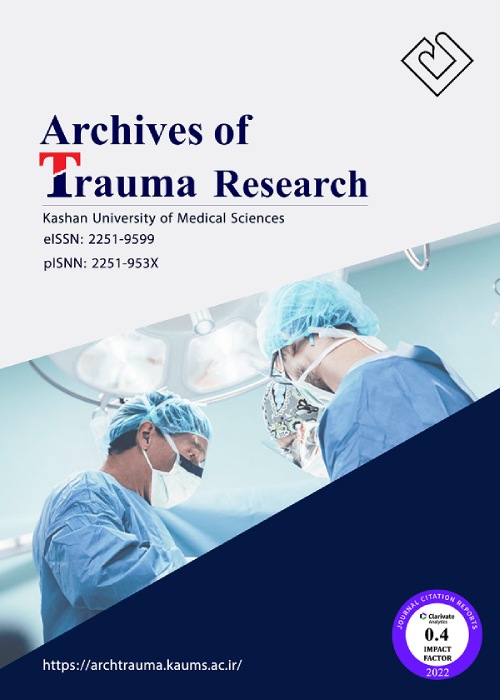Extremity War Injuries: A Retrospective Study of the Iran–Iraq War
Warfare is an immense destruction of human life and infrastructure. Wide‑scale trauma is a gigantic problem, and the latest war trends are toward targeting more civilians. Injuries in war are multifactorial depending mostly on arms engaged. The objective of this study was to examine the characteristics of extremity injuries in the Iran–Iraq war. The important principle is recognizing injury types, mechanism of trauma, and factors influencing complications in extremity injuries of war.
In this retrospective study, we reviewed documents of 8437 patients who were transported and treated in Imam Khomeini Hospital, Tehran, during 8‑year Iran–Iraq war from 1980 to 1988. 7352 patients with physical injuries were selected as a sample. Data collection form included type, mechanism, and location of the injury, associated lesions, and the treatment given. Data were analyzed by descriptive statistics (frequency and mean) using SPSS software.
Medical archive review identified 8437 patients, 7352 sustaining physical trauma and 4926 among them had 6601 extremity injuries. Mean age of the patients sustaining extremity injury was 23 years. 74% (4885) of the injuries were caused by shrapnel fragments, 12% (792) were caused by bullets and rest 14% were due to various other causes. There were 53.9% (3561/6601) fractures among the total injuries, most commonly involving femur (19.9%). Fracture fixation with 66.3% (1394/2103) was the most common type of orthopedic treatment provided. In addition, 20.6% (1359/6601) injuries were related to arterial lesions and 32% (2112/6601) were accompanied with nerve damage.
Extremity injury is a major trauma in war zones and leads to high rate of morbidity; however, if appropriate care and timely assistance are provided, it has low risk of death. Understanding type, frequency, and mechanism of injury and factors influencing trauma is of extreme importance in appropriate management and avoiding unnecessary amputations.
- حق عضویت دریافتی صرف حمایت از نشریات عضو و نگهداری، تکمیل و توسعه مگیران میشود.
- پرداخت حق اشتراک و دانلود مقالات اجازه بازنشر آن در سایر رسانههای چاپی و دیجیتال را به کاربر نمیدهد.



